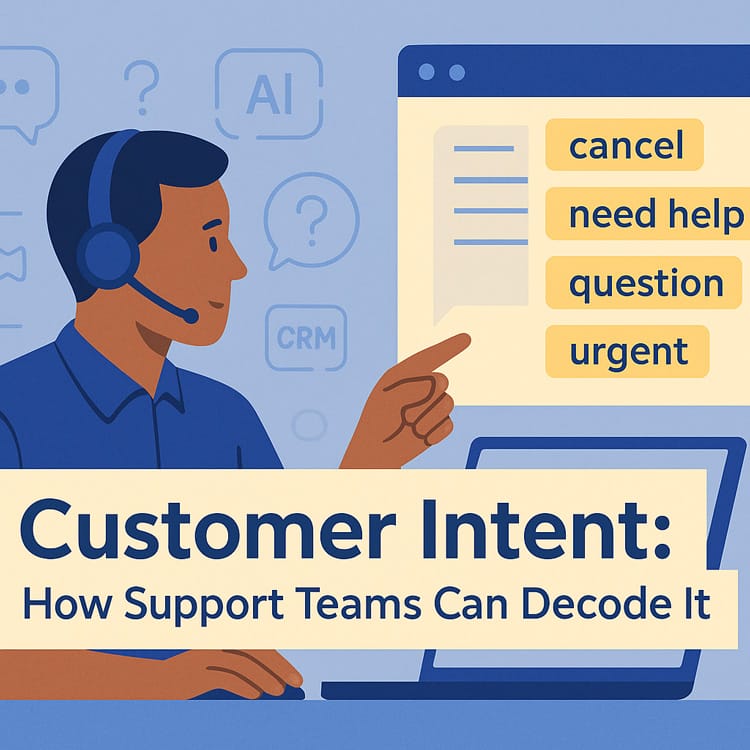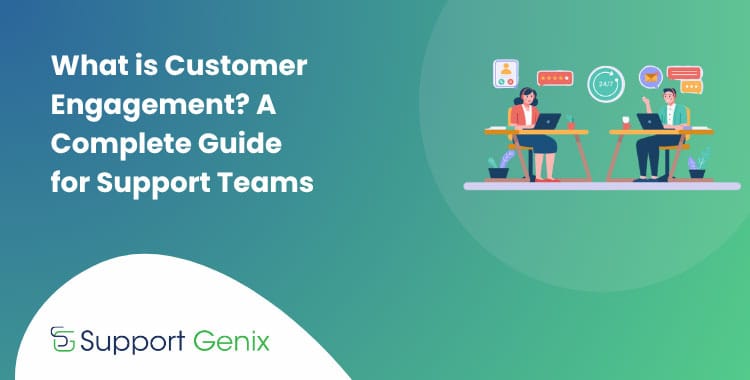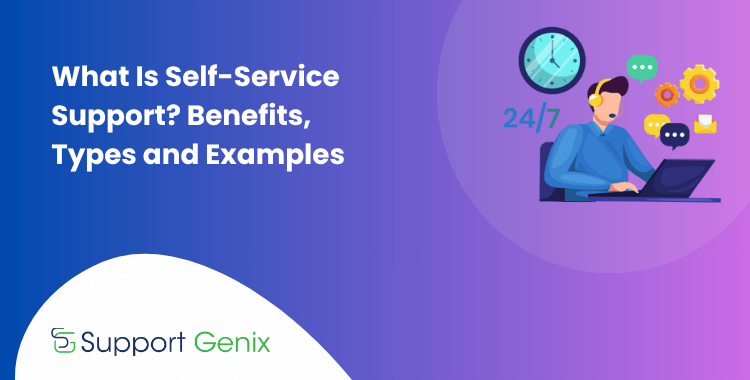Customer Intent: How Support Teams Can Decode It

Every customer reaches out with a hidden purpose. They might ask one question but need something else entirely. Understanding this hidden purpose is what we call decoding customer intent.
Support teams often miss the real reason behind customer messages. A simple “how do I cancel?” might actually mean “I’m confused about this feature.” This guide will teach you how to uncover what customers really want.
Recent studies reveal striking statistics about customer intent accuracy. Only 38% of support agents correctly identify customer intent on first contact. Companies that master intent detection see 67% faster resolution times.
Key Takeaways
By reading this guide, you will learn:
- How to identify the three main types of customer intent quickly
- Proven techniques to uncover what customers really need
- Simple methods to build your own intent detection system
- Which AI tools and manual strategies work best for support teams
- Effective ways to train your team on intent recognition
- Key metrics to track your intent detection success rate
What is Customer Intent?
Customer intent is the true goal behind any support request. It goes deeper than the surface-level question. Think of it as the “why” behind the “what.”
Support teams encounter three main types of intent. Informational intent means customers seek knowledge or answers. Transactional intent shows customers want to complete a specific action.
Navigational intent appears when customers need directions within your product. Each type requires a different support approach. Recognizing these patterns helps you respond more effectively.
Why Customer Intent Matters for Support Teams
Understanding intent speeds up problem resolution dramatically. Support agents solve the real issue on the first try. Customers feel heard and understood immediately.
Better intent recognition leads to measurable improvements. First-contact resolution rates increase by up to 30%. Customer satisfaction scores rise when agents address underlying needs.
Proactive support becomes possible with good intent detection. Teams can prevent problems before customers complain. This reduces overall ticket volume and agent workload.
How to Spot Customer Intent
Reading the Signs
Certain keywords reveal customer intent instantly. Words like “frustrated,” “confused,” or “urgent” signal emotional states. These emotional markers guide your response strategy.
Customer behavior patterns tell their own story. Multiple searches for the same topic indicate confusion. Repeated visits to pricing pages suggest purchase consideration.
The timing of requests also matters significantly. Late-night urgent messages often indicate critical issues. Monday morning floods usually contain accumulated weekend problems.
Common Intent Scenarios
“I want to cancel” rarely means an immediate cancellation desire. Customers often seek attention for unresolved issues. They use cancellation threats to escalate their concerns.
Price questions reveal more than budget concerns. Customers asking about costs might be comparing options. They could be ready to upgrade but need reassurance.
Feature inquiries show engagement and investment levels. Detailed questions indicate serious users exploring capabilities. Surface-level queries might suggest that new users feel overwhelmed.
Practical Methods to Decode Intent
Ask the Right Questions
Start with open-ended questions to gather context. “Can you tell me more about your experience?” works well. This approach lets customers explain in their own words.
Follow up with specific questions based on their response. Clarify any ambiguous points without making assumptions. Confirm your understanding before proposing solutions.
Use the “echo technique” to validate intent. Repeat back what you understood in different words. This ensures you and the customer are aligned.
Listen Beyond the Words
Pay attention to urgency indicators in messages. All-caps text and multiple exclamation points signal high stress. These customers need immediate acknowledgment and action.
Notice what customers leave unsaid in their messages. Vague complaints often hide specific frustrations. Gentle probing reveals these hidden pain points.
Emotional context shapes the entire interaction. Angry customers need empathy before solutions. Confused customers require patient, step-by-step guidance.
Support Genix
WordPress Support Ticket Plugin
Take Your Customer Support to The Next Level and Boost Customer Satisfaction Rates
Building Your Intent Detection System
Create Intent Categories
Start with four basic intent categories. Technical issues cover all product-related problems. Billing concerns include payment and subscription questions.
Feature requests capture customer wishes and suggestions. Complaint resolution handles dissatisfaction and negative experiences. These categories cover most support scenarios.
Refine categories based on your specific product needs. Add subcategories for common issues within each group. Keep the system simple enough for quick classification.
Develop Response Templates
Create flexible templates for each intent category. Templates should guide agents without sounding robotic. Include placeholders for personalization and specific details.
Match your tone to the identified intent. Technical issues need clear, methodical responses. Complaints require empathetic, solution-focused language.
Test templates with real customer interactions. Gather feedback from both agents and customers. Update templates monthly based on performance data.
Tools and Technology for Intent Detection
AI-Powered Solutions
Modern chatbots use natural language processing for intent recognition. They categorize inquiries before human agents see them. This pre-sorting saves valuable response time.
Sentiment analysis tools measure emotional undertones in messages. They flag high-priority emotional situations for immediate attention. Agents can prepare appropriate responses before engaging.
Automated routing systems direct tickets to specialized agents. Technical queries go to technical experts automatically. Billing issues reach finance-trained support staff directly.
Manual Tools
Simple tagging systems help track intent patterns. Agents mark each ticket with intent categories. This data reveals trends and training opportunities.
Customer journey maps visualize common intent paths. They show how different intents lead to various outcomes. Teams use these maps to anticipate customer needs.
Regular feedback collection validates intent assumptions. Short surveys after interactions confirm accuracy. This information improves future intent detection efforts.
Training Your Team
Schedule weekly intent recognition exercises with your team. Use real customer messages for practice scenarios. Discuss different interpretations and best responses together.
Share successful intent detection examples during team meetings. Celebrate agents who uncover hidden customer needs. Create a library of these success stories.
Build a team knowledge base for intent patterns. Document common scenarios and effective responses. Update this resource as new patterns emerge.
Measuring Success
Track your average resolution time weekly. Intent-focused support should reduce these times significantly. Set realistic improvement goals for your team.
Monitor customer satisfaction scores after implementing intent detection. Look for increases in positive feedback mentions. Pay attention to specific comments about feeling understood.
Count repeat contacts for the same issues. Good intent detection reduces these frustrating experiences. Aim for single-contact resolution whenever possible.
Frequently Asked Questions
What is customer intent in customer service?
Customer intent is the real purpose behind a support request. It reveals what customers actually need versus what they initially ask. Support teams use intent detection to solve problems faster and more accurately. Understanding intent reduces resolution time and improves customer satisfaction significantly.
How do you identify customer intent?
Identify customer intent by analyzing keywords, emotions, and behavioral patterns carefully. Look for urgency indicators like caps lock or multiple exclamation points. Ask open-ended questions to uncover hidden needs behind surface-level requests. Use sentiment analysis tools to detect emotional context in customer messages.
What are the 3 types of customer intent?
The three main types are informational, transactional, and navigational customer intent. Informational intent seeks knowledge about products, features, or troubleshooting steps. Transactional intent involves completing specific actions like purchases or cancellations. Navigational intent needs directions to find features or complete tasks.
Why is understanding customer intent important?
Understanding customer intent improves first-contact resolution rates by up to 67%. It helps agents address real problems instead of surface-level symptoms. Teams save time by solving the right issue on first attempt. Customer satisfaction increases when agents understand and address underlying needs effectively.
What tools help detect customer intent?
AI chatbots use natural language processing to categorize customer intent automatically. Sentiment analysis tools identify emotional states in customer messages and conversations. CRM systems with intent tagging help track patterns over time periods. Manual methods include journey mapping and regular team training exercises.
How can support teams improve intent detection?
Support teams improve intent detection through regular training and practice exercises. Create intent categories and response templates for common scenarios teams encounter. Measure success using resolution time and customer satisfaction score metrics. Share successful examples and build knowledge bases for continuous team improvement.
Conclusion
Decoding customer intent transforms average support into exceptional service. Teams that master this skill create better customer experiences. The investment in intent detection pays off quickly.
Start implementing these strategies with one category at a time. Train your team gradually and measure improvements. Remember that perfecting intent detection takes practice and patience.
Your customers are waiting for someone to truly understand them. Be the support team that hears beyond the words. Make every interaction count by addressing real needs.

